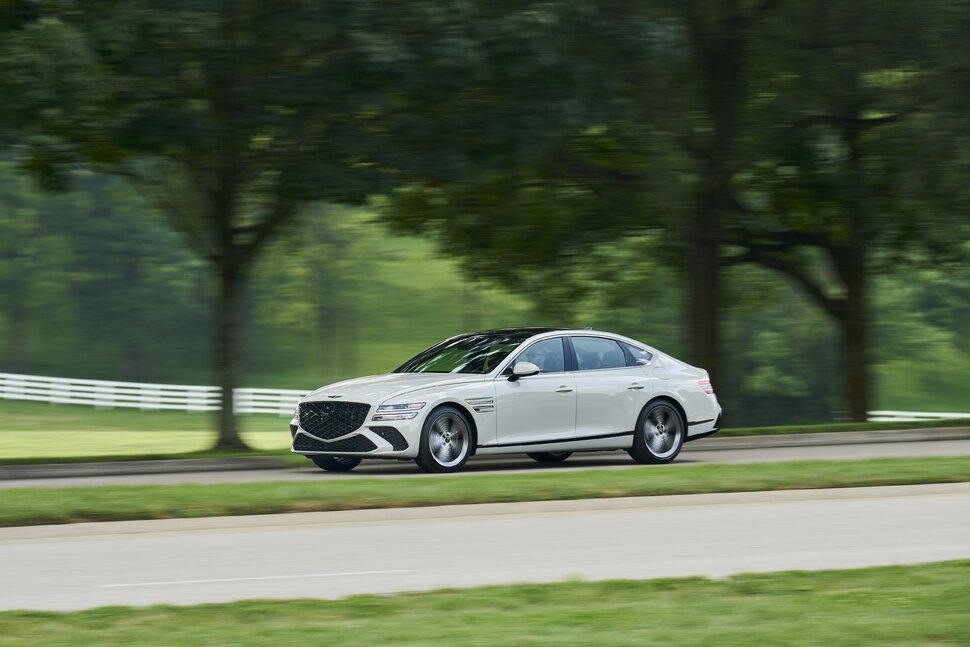When it comes to buying a sedan, most people tend to focus on obvious specs—horsepower, fuel economy, technology features, trunk space, and safety ratings.
These are all critical factors, no doubt. But there’s one aspect that quietly—but powerfully—shapes your entire driving experience: sound insulation. Whether you’re navigating city traffic, cruising along a freeway, or coasting through a quiet residential area, the noise levels inside the cabin can significantly affect how enjoyable or exhausting your time behind the wheel becomes.
Think about your daily commute. Even the most comfortable seat or responsive engine starts to lose its charm when you’re constantly bombarded with the roar of tires on pavement, the whine of the wind slipping past side mirrors, or the hollow rattle of cheap interior materials.
These are the subtle enemies of serenity on the road. They don’t show up on a spec sheet, but they play a major role in long-term driving satisfaction. Poor noise isolation doesn’t just dampen the luxury feel—it leads to fatigue, distraction, and sometimes a subconscious irritation that builds over time.
On the flip side, step into a well-insulated sedan and the difference is almost immediate. A solid “thunk” when the door closes, a cabin that stays calm even when the world outside is chaotic, and the ability to converse at a whisper while going 70 mph—these are the small luxuries that separate merely good sedans from truly excellent ones.
A quiet ride feels more composed, more mature. It enhances everything else: your music sounds better, your thoughts stay clearer, and long drives feel far less taxing.
Interestingly, noise insulation varies widely even among cars in the same segment. Some entry-level sedans make impressive strides toward a quieter cabin, while certain mainstream models—even recent ones—still fall behind.
On the luxury end, many manufacturers invest heavily in sound-deadening techniques, but not all execute it with the same finesse. What matters isn’t just how much material is used, but where it’s placed, how well the cabin is sealed, and how engineering choices around suspension, tires, engine mounting, and body rigidity all come together.
In this comprehensive breakdown, we’ve curated two contrasting lists: five sedans that excel at keeping noise at bay, and five that are noticeably noisier, particularly at highway speeds or on less-than-perfect road surfaces.
The goal here isn’t to bash the latter, but to highlight the acoustic trade-offs that come with certain design priorities—whether it’s cost efficiency, sporty feedback, or raw simplicity.
In the “quiet champions” category, you’ll find vehicles that have gone the extra mile (and budget) to deliver an environment akin to a rolling sanctuary. These sedans aren’t just better-insulated; they’re engineered from the ground up to reduce NVH (Noise, Vibration, and Harshness) and elevate comfort to near-luxury or ultra-luxury standards.
Cars like the Lexus ES, Mercedes E-Class, and Genesis G80 have refined their NVH suppression to a science—using multiple layers of acoustic glass, hydraulic engine mounts, advanced suspension damping, and wind tunnel-tested body shapes to eliminate external interruptions.
Conversely, the “noisy notables” list includes models like the Honda Civic, Subaru Impreza, and older Nissan Sentras. These are by no means bad cars—they’re reliable, efficient, and often fun to drive—but they cut costs or prioritize other characteristics at the expense of acoustic refinement.
For some drivers, the added road feedback may even feel engaging. But for those who value a more isolated and peaceful cabin, the trade-off can be quite stark, especially during extended use.
So whether you’re in the market for a luxury cruiser or a budget-friendly commuter, understanding a sedan’s sound insulation (or lack thereof) is crucial. It’s the difference between a car you merely use and one you genuinely enjoy—day in and day out. Let’s dive into both ends of the spectrum and explore the best and the loudest sedans when it comes to road noise and cabin isolation.
Also Read: 5 Cars That Don’t Suffer From Frame Rot and 5 That Snap in Half
Top 5 Sedans with the Best Sound Insulation
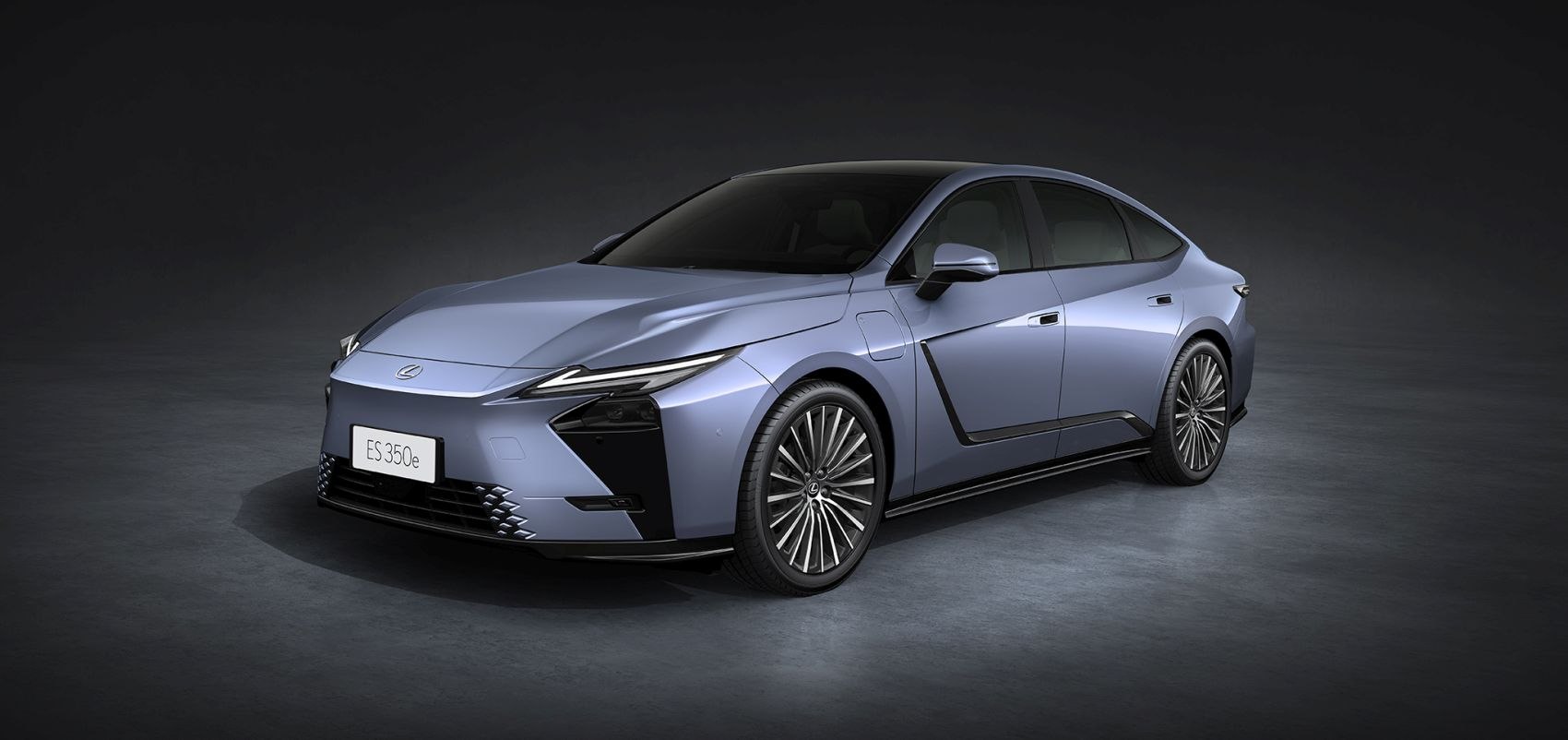
1. Lexus ES
The Lexus ES is not just another luxury sedan—it’s a model built on a legacy of serenity and subtlety. With decades of refinement behind it, the ES has earned a reputation as one of the quietest sedans on the market. Every inch of the vehicle is engineered to suppress unwanted sound frequencies.
From its triple-layered door seals to its thick acoustic-laminated windshield and front windows, Lexus has taken significant measures to ensure that passengers enjoy a tranquil cabin environment. Even the rear windows use specially treated glass to reduce high-frequency wind noise, something usually reserved for top-tier luxury vehicles.
A significant factor contributing to the ES’s whisper-quiet ride is its suspension and platform. Built on the Toyota TNGA-K platform, which emphasizes rigidity and refined chassis behavior, the ES minimizes body vibrations and resonance.
This solid foundation helps insulate the cabin not just from road noise but also from the low-frequency sounds typically generated by the engine and suspension movements. Paired with a well-tuned adaptive suspension system, the ride becomes silky smooth—even over broken pavement or highway expansion joints—without sacrificing feedback to the driver.
Moreover, Lexus has heavily dampened the engine bay and firewall, and even gone so far as to install extra insulation beneath the carpeting and in the headliner. The ES Hybrid takes this a step further by allowing for electric-only operation at low speeds, making urban driving eerily silent.
Lexus has also employed an intelligent HVAC system that runs quietly without the usual hiss of air through vents. Noise levels are so low that you can clearly hear the subtle tone of the Mark Levinson premium audio system, which itself is acoustically tuned to the quietness of the ES’s cabin.
All of this results in a vehicle that isn’t just quiet—it’s composed. There’s a difference between a car that simply mutes noise and one that feels acoustically balanced, and the ES firmly belongs in the latter category.
Whether you’re commuting through traffic, cruising at highway speeds, or just idling in your driveway, the ES feels more like a luxury lounge than a moving vehicle. If quietness is a priority, few cars do it better than this one—regardless of price.
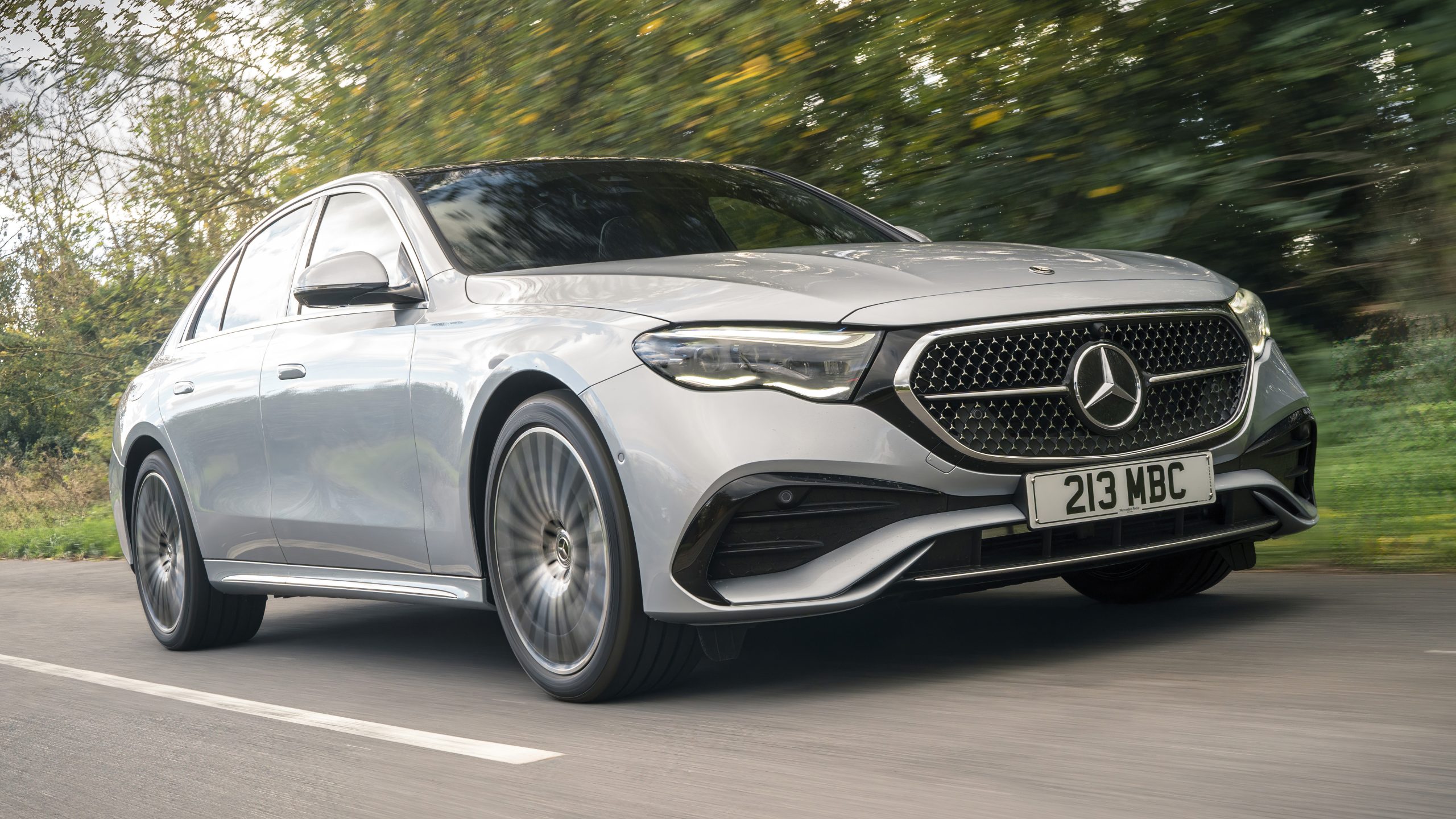
2. Mercedes-Benz E-Class
Few vehicles strike the balance between engineering perfection and real-world comfort as gracefully as the Mercedes-Benz E-Class. Long considered the benchmark for midsize luxury sedans, the E-Class doesn’t just offer plush interiors and cutting-edge tech—it creates a nearly hermetically sealed environment that isolates its occupants from the chaos outside.
Mercedes accomplishes this through a multi-pronged NVH (Noise, Vibration, and Harshness) approach, starting with a body structure designed for torsional rigidity. The result is a platform that inherently resists vibration and sonic transmission from the road.
The E-Class is fitted with double-glazed windows, specialized door seals, and expansive use of sound-absorbing materials in the floor, firewall, and trunk areas. Even the trunk has been acoustically lined to prevent echo and reverberation. This means less tire slap, fewer road vibrations, and a noticeable absence of wind whistle even at highway speeds.
The car’s sculpted exterior and wind-tunnel-tuned aerodynamics—like reshaped side mirrors and minimized panel gaps—play a pivotal role in reducing air turbulence around the vehicle’s body, a common cause of wind noise.
In terms of drivetrain isolation, Mercedes has outdone itself. The engine mounts are filled with a special hydraulic fluid that changes stiffness based on RPM and throttle input, effectively muting any harshness from the powertrain.
On top of that, active engine mounts on some models dampen low-frequency vibrations that would otherwise penetrate the cabin. Combined with a whisper-quiet 9-speed automatic transmission and superbly insulated turbocharged engines, the overall experience is one of unparalleled smoothness.
What’s particularly impressive about the E-Class is that it accomplishes all of this without making the car feel numb. You still sense the power when you accelerate, and there’s a refined growl when you floor the throttle—but it never intrudes.
The noise, when it exists, is curated, intentional, and premium. With or without the optional air suspension, the E-Class glides over the road with composure, and the silence it maintains at cruising speed is something that has to be experienced to be fully appreciated.
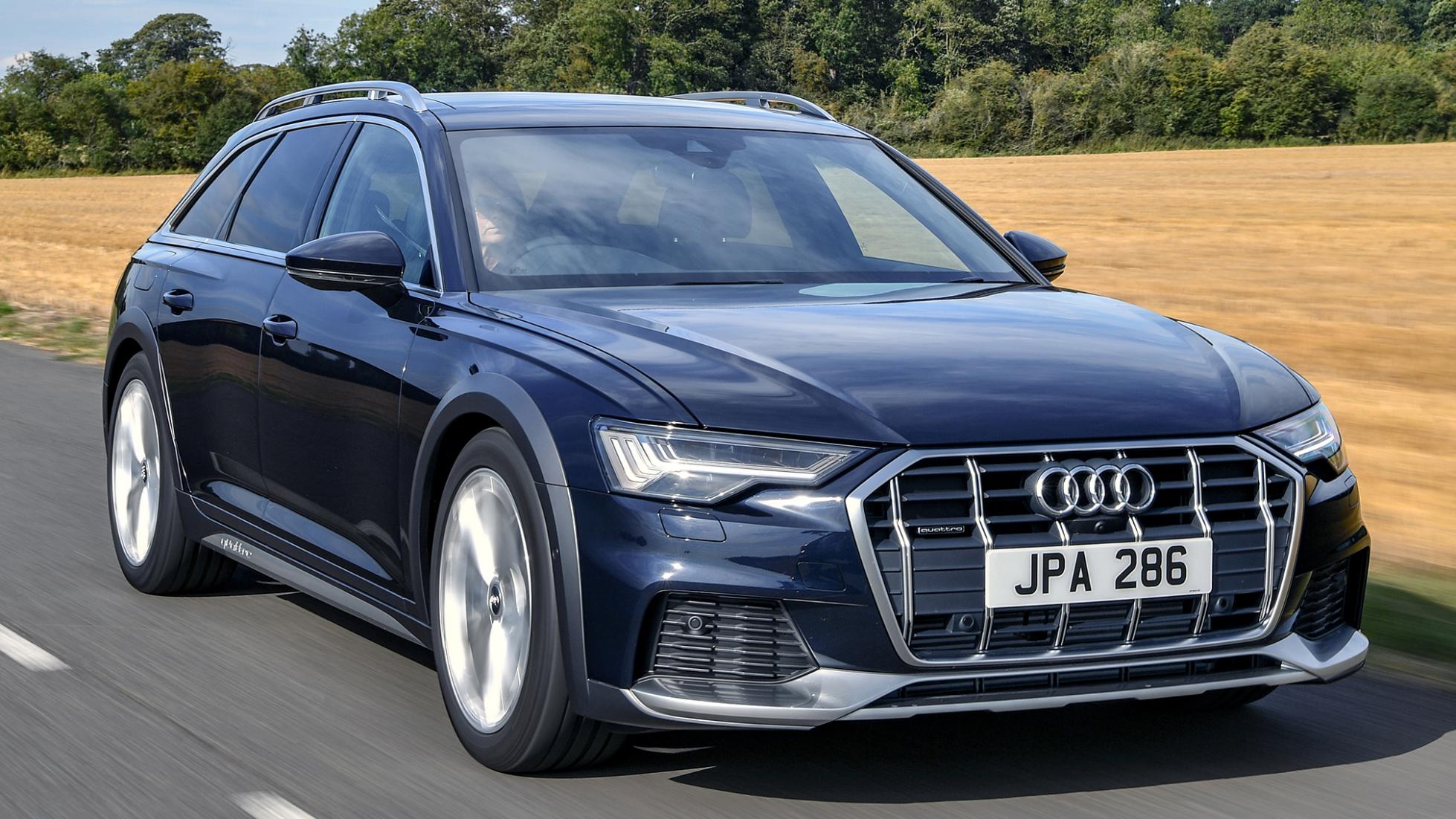
3. Audi A6
The Audi A6 isn’t just a midsize luxury sedan—it’s a sonic sanctuary designed for those who value sophisticated quietness. Audi’s engineering team has taken a methodical approach to reduce interior noise, and it shows. From the very first moment you close the A6’s solid-feeling doors, there’s a reassuring “thunk” that signals you’re entering a well-insulated space.
This sensation is more than just perception; it’s the result of layered acoustic glass, door soundproofing inserts, and a cabin designed to absorb, deflect, and dissipate noise before it reaches your ears.
The materials in the Audi A6 are a key player in its NVH excellence. Plush headliners, thick carpeting, foam-lined panels, and underbody cladding all contribute to an interior that remains hushed at virtually any speed. Even the door handles and armrests are padded in a way that prevents internal rattle or vibration.
Engine noise is kept in check through a heavily insulated firewall, and the turbocharged engines are tuned for smooth, gradual torque delivery rather than abrupt power surges that could generate excess noise.
Audi’s Quattro all-wheel-drive system, while performance-oriented, also contributes to a more stable and quiet ride. Because power is delivered more evenly to all four wheels, there’s less strain and wheel spin on launch, reducing tire squeal and mechanical sound.
Audi also equips the A6 with a suspension that absorbs small and large impacts equally well, further decreasing the acoustic energy transmitted into the passenger cabin. Tires are chosen not only for grip and performance, but also for their low rolling noise, with options that come equipped with foam inserts to dampen resonance.
Another underrated feature is the car’s infotainment and HVAC integration. These systems operate with minimal motor noise, and buttons give subtle haptic feedback rather than loud clicks. The A6 is designed so that even its technology doesn’t disrupt the auditory calm.
Altogether, the Audi A6 crafts an experience that makes long drives feel less like transportation and more like time spent in a high-end, soundproofed studio. It’s a favorite among executives and enthusiasts alike who appreciate a premium car that prioritizes both performance and peace.

4. Toyota Avalon
Toyota’s Avalon may not carry a luxury badge, but it certainly delivers a luxury-like sense of peace and refinement. Positioned at the top of Toyota’s sedan lineup, the Avalon bridges the gap between mainstream affordability and luxury-level NVH performance.
For those who want Lexus-like quiet without Lexus pricing, the Avalon is a compelling option. It benefits from years of engineering innovation and sound-suppression know-how inherited from its luxury sibling.
The Avalon features an acoustic windshield and additional sound-deadening materials throughout its chassis, including strategic insulation in the wheel wells, under the floor, and behind the dashboard.
Toyota went so far as to include foam-injected A-pillars and extensive sealing around door frames—measures typically found in cars from premium German brands. The result is a cabin that stays composed and quiet, even when traveling over coarse, grooved concrete or pitted asphalt.
Road noise is minimized further by the use of special low-rolling-resistance tires that are engineered to reduce tread slap. While the suspension is tuned more for comfort than handling, this works in the Avalon’s favor when it comes to suppressing impact harshness.
Whether you’re coasting over potholes or tackling long highway stretches, the Avalon soaks up imperfections with grace. Wind noise, too, is kept to a minimum thanks to careful aerodynamic shaping and smart placement of mirrors and window seals.
Even the hybrid version of the Avalon stands out for its silence. Operating under electric power in city traffic, the car becomes nearly silent, especially during start-up and low-speed maneuvers.
Add to this a calm, well-insulated interior trimmed with soft-touch materials and minimal creaking or rattling, and the result is a vehicle that punches well above its class in acoustic comfort. For daily drivers and long-haul commuters alike, the Avalon delivers a serene driving experience that’s difficult to match in the non-luxury sedan space.
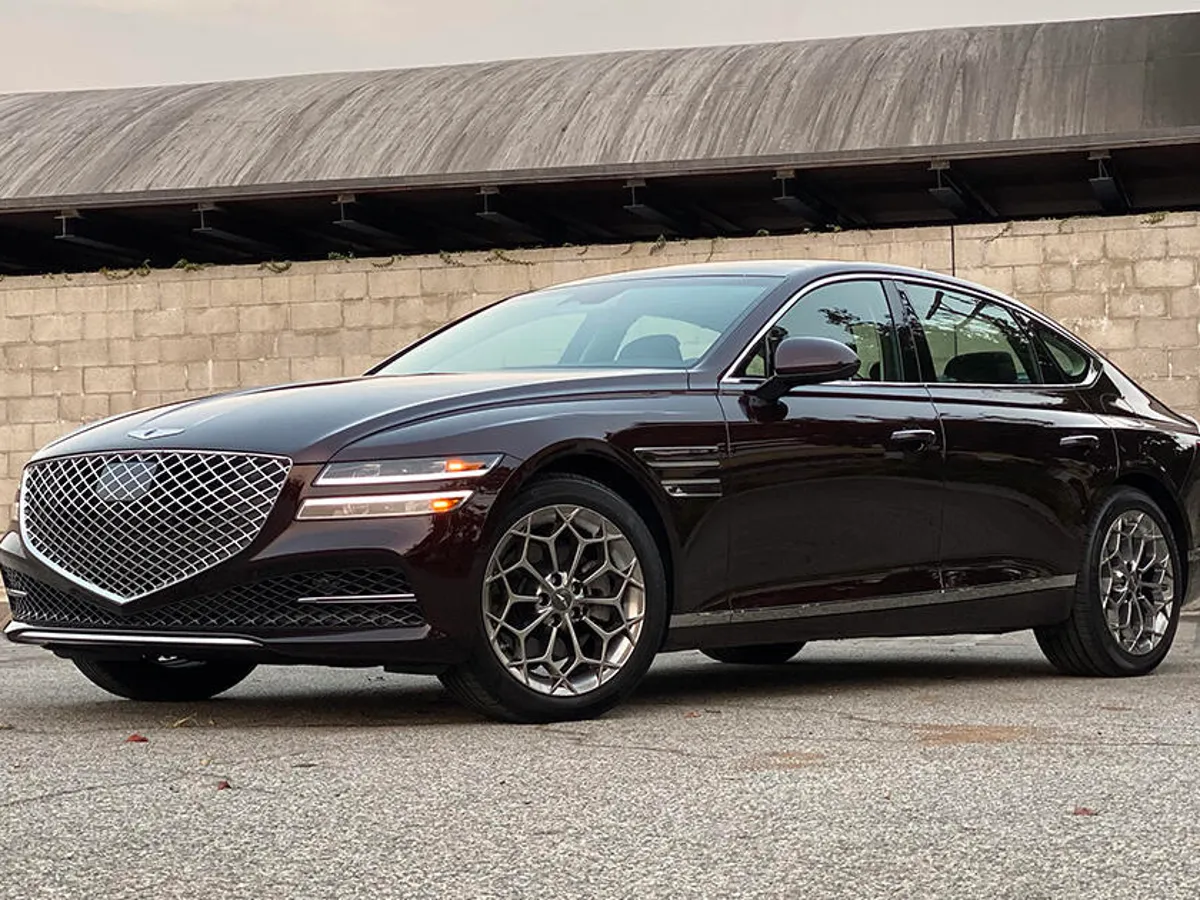
5. Genesis G80
If you’re looking for a sedan that combines modern design with astonishingly good sound insulation, the Genesis G80 should be at the top of your list.
As the flagship midsize sedan of Hyundai’s luxury division, the G80 represents a bold attempt to outclass established German and Japanese luxury players—and it succeeds on many fronts, particularly NVH refinement. This car exudes a sense of vault-like stillness that rivals even the most expensive sedans from Audi or BMW.
Genesis uses multi-layered acoustic glass not just for the windshield, but for all side windows—something many competitors reserve for higher trims or optional packages.
The cabin is sealed tightly, with triple-layered door gaskets, hydraulic engine mounts, and a dual-firewall design that effectively muffles drivetrain and suspension noise. Even the underbody of the G80 has been shaped and padded to prevent wind turbulence from creating audible vibration or thumping sounds at high speeds.
The G80’s interior plays a big role in its perceived silence. Upholstered in thick leather and lined with real wood or soft-touch synthetics, the cabin materials absorb a good amount of ambient sound.
The headliner and floorboards have thick, layered insulation that blocks out both low-frequency rumble and high-frequency wind noise. In higher trims, Genesis even offers an advanced active noise cancellation system that works in real-time to neutralize tire and road noise using sound waves emitted from the speakers.
One of the most impressive aspects of the G80’s quietness is how consistent it is across different driving conditions. Whether you’re idling in traffic, coasting down a freeway, or accelerating up a hill, the sound levels remain remarkably subdued.
The car even suppresses noise from other vehicles and surroundings so well that it creates a mental bubble of calm for the driver and passengers. In the luxury midsize segment, the Genesis G80 doesn’t just compete—it excels, especially when it comes to delivering a serene, well-insulated ride.
5 Sedans with Notably High Road Noise
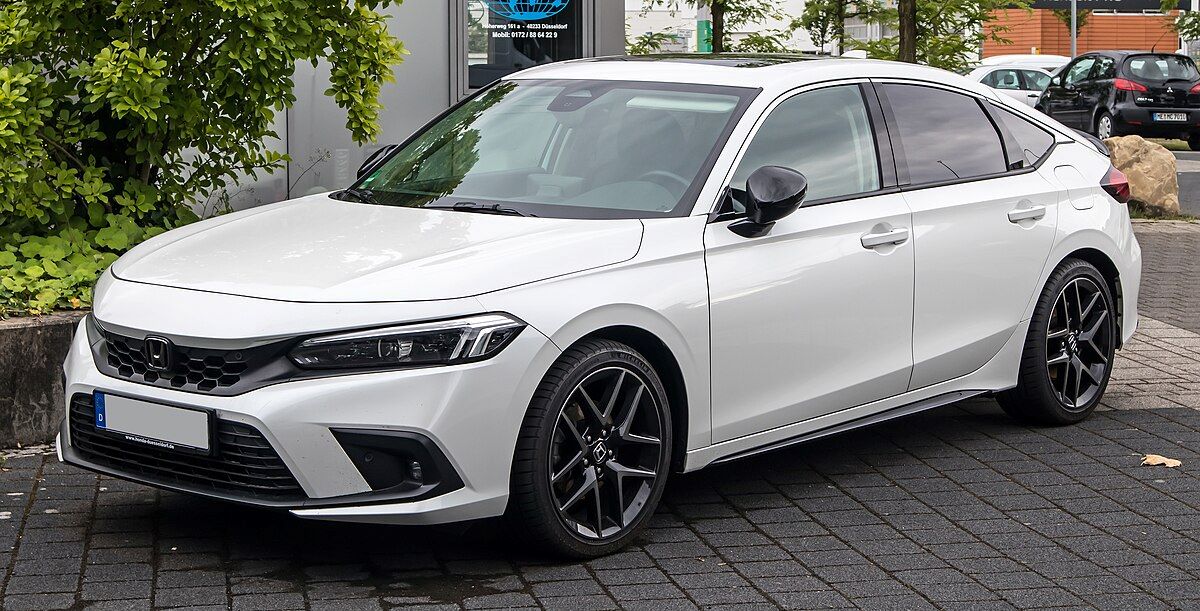
1. Honda Civic (Base and Mid Trims)
The Honda Civic is a household name in the compact sedan market, celebrated for its reliability, fuel efficiency, and driving dynamics. However, despite recent design overhauls and added tech features, the Civic—especially in its lower trims—continues to struggle with elevated levels of road and wind noise.
For many budget-conscious buyers, this might not be a dealbreaker, but once you’ve spent considerable time on highways or rough asphalt, the acoustic compromises become more apparent.
One of the Civic’s Achilles’ heels is its lightweight construction. While this helps with fuel economy and agility, it doesn’t do any favors for cabin insulation. Honda has historically prioritized affordability and performance over NVH refinement in its non-luxury offerings, and this ethos carries into the Civic’s build.
Base models often skip out on laminated glass, thicker door panels, and high-density underbody insulation. As a result, noises from the tires, wind turbulence, and mechanical operations enter the cabin with greater ease compared to more refined competitors.
Additionally, the Civic’s minimalist sound deadening makes the suspension’s response more audible than it should be. The torsional rigidity of the chassis means the ride quality is solid and composed, but it also means the sound of bumps and tire impacts tends to resonate through the structure.
Combine that with thinner carpets and more utilitarian interior materials, and you’re left with an acoustic environment that lacks damping. Conversations and audio become harder to enjoy, particularly on longer trips.
Honda has made notable improvements in the most recent Civic Touring trims, including more insulation and premium materials. Yet, for the more commonly sold LX and Sport trims, the absence of refined NVH management remains a concern. It’s still a fantastic car mechanically—but if quietness and cruising serenity are high on your list, you may find yourself wishing for a bit more hush behind the wheel.

2. Subaru Impreza
Subaru’s Impreza has a lot going for it: standard all-wheel drive, impressive safety features, and an underdog charm. But when it comes to cabin noise, it’s one of the louder vehicles in the compact sedan category.
Across multiple generations, the Impreza has received consistent critiques for letting in excessive road, engine, and wind noise. While these traits don’t completely diminish its value, they certainly limit its appeal for buyers who prioritize comfort and tranquility.
Part of the blame lies in the design philosophy Subaru adopts. Known for their rugged, practical vehicles, Subaru has focused more on durability and performance than on high-end refinement.
The Impreza’s interior materials are often hard plastics, which don’t absorb sound as well as the softer, thicker surfaces found in more upscale rivals. Additionally, its flat-four “boxer” engine design, though great for balance and handling, produces a unique rumble that tends to be more noticeable inside the cabin.
The Impreza also lacks robust underbody insulation and often comes with all-season tires that prioritize grip over quietness. This means tire roar is clearly audible, especially on concrete highways and coarse surfaces.
Wind noise around the A-pillars and mirrors adds to the disturbance at higher speeds, making highway cruising a more fatiguing experience than it should be. It’s particularly noticeable on long trips where the constant background hum can begin to wear on the driver’s focus and patience.
In newer models, Subaru has begun adding more insulation and refining its cabin materials, especially in higher trims like the Limited. However, these changes haven’t completely solved the issue.
Even in improved variants, you’ll still notice more of the outside world creeping in compared to competitors like the Corolla or Elantra. In short, the Impreza remains functional, capable, and reliable—but also fairly loud, especially for those who have experienced quieter alternatives in the same segment.
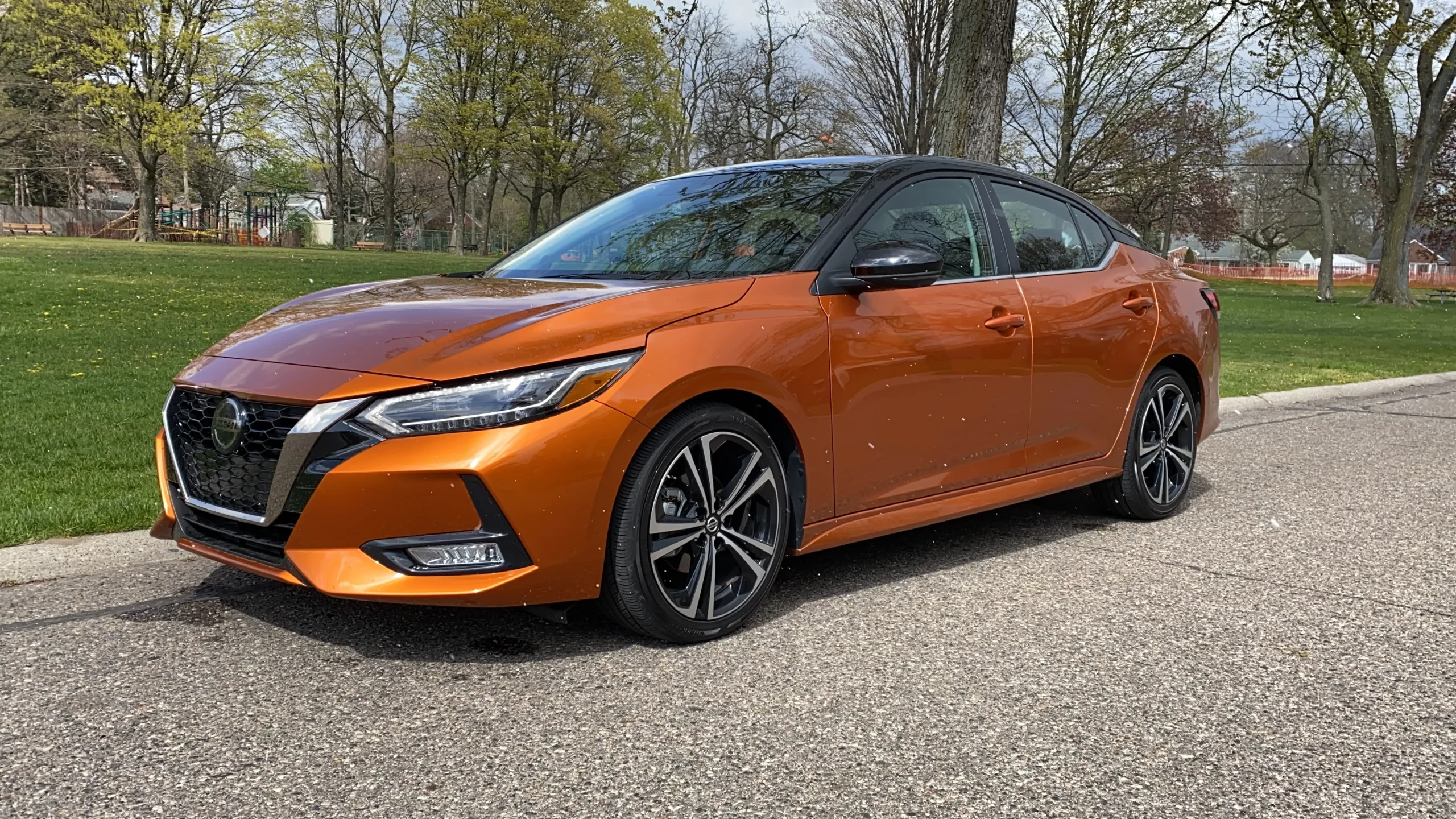
3. Nissan Sentra (2013–2019 Models)
The Nissan Sentra is a competent, no-nonsense compact sedan that serves its purpose well for commuters and budget buyers. However, models from the 2013 to 2019 generation are frequently criticized for one major flaw: excessive cabin noise.
While it delivers decent fuel economy and interior space, the Sentra has never been known for its refinement. Instead, it tends to expose occupants to the raw sounds of driving—whether they like it or not.
This generation of the Sentra was built with cost-cutting in mind. Nissan opted for thinner sheet metal, reduced sound insulation in the wheel wells and firewall, and standard glass that doesn’t do much to muffle exterior noise.
As a result, the sound of tires on pavement, wind buffeting past the windows, and the constant drone of the engine are ever-present. These issues are amplified at higher speeds, where the sound can become intrusive enough to interfere with hands-free calls or casual conversation.
The Sentra’s CVT (continuously variable transmission) doesn’t help matters. While efficient, the CVT often causes the engine to rev higher and hold those revs during acceleration, producing a constant droning sound that enters the cabin. Unlike traditional automatics, which shift gears and allow for quieter cruising, the CVT keeps the engine note lingering—especially annoying when merging onto highways or climbing hills.
To its credit, Nissan addressed many of these concerns in the completely redesigned 2020 and later Sentra models. These newer models benefit from stiffer body structures, improved insulation, and a better-tuned CVT.
However, for anyone shopping in the used market, the 2013–2019 Sentra remains a vehicle that delivers decent practicality—but with a noticeable lack of cabin serenity. If you regularly travel on noisy surfaces or value long-distance comfort, this generation of Sentra may come up short in the auditory comfort department.
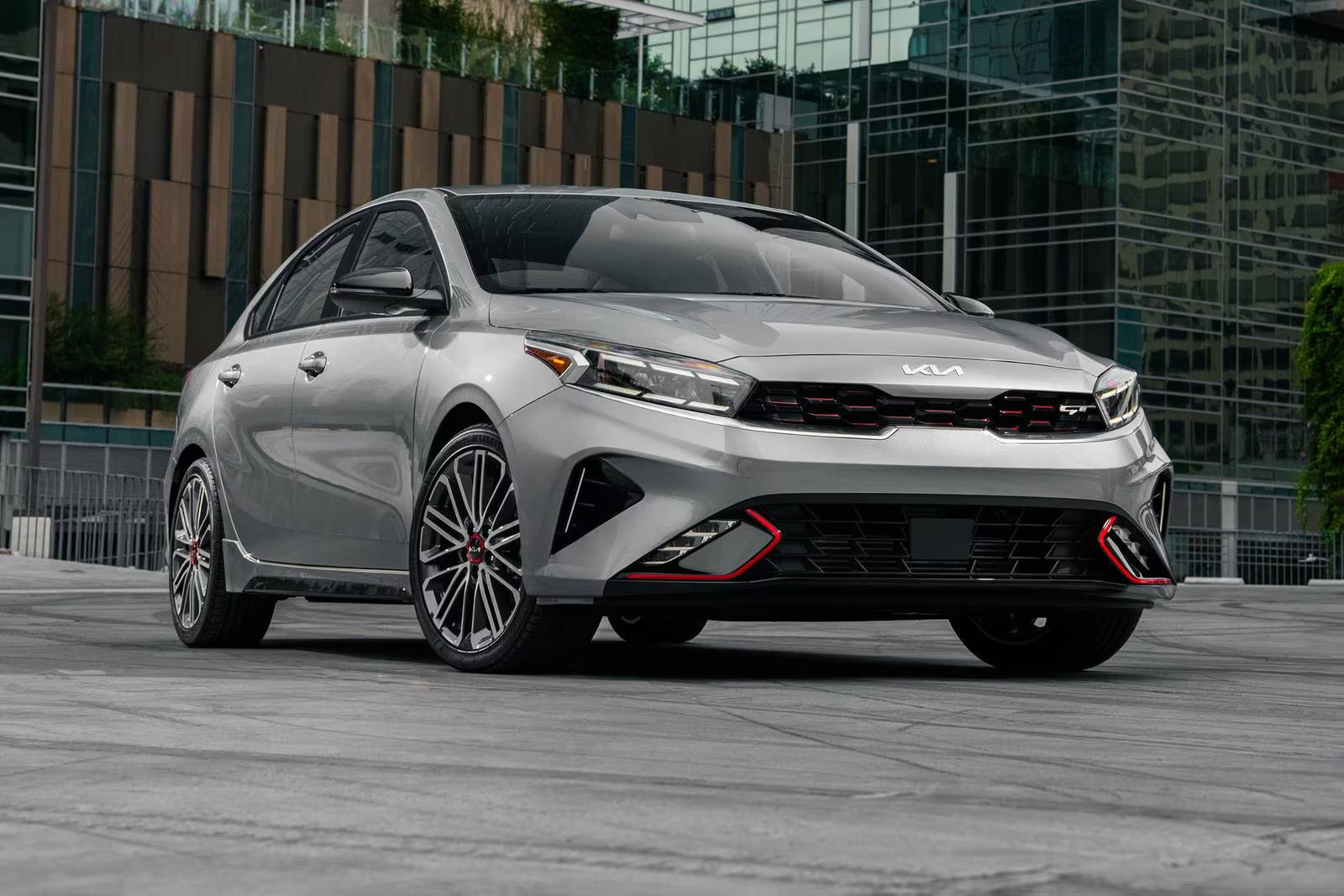
4. Kia Forte
The Kia Forte is a prime example of a vehicle that excels in many measurable ways—styling, value, feature content—but falls short when it comes to noise suppression.
In lower trims, the Forte delivers an acceptable driving experience for daily commuters, but the moment the road surface becomes less than ideal, the cabin’s acoustic weaknesses begin to surface. Tire slap, road roar, and wind noise become unwelcome companions, especially when cruising above 60 mph.
One of the main reasons for the increased cabin noise in the Forte is its minimal use of sound-deadening materials. Entry-level trims often forego the thicker underbody pads, wheel arch liners, and acoustic windshield glass that help reduce NVH.
This minimalist approach keeps costs low, but it also means more noise is transmitted into the interior. Even the suspension, which is tuned for firmness to give the Forte a slightly sportier feel, contributes to this by channeling road texture and impact sounds directly into the cabin structure.
The powertrain doesn’t offer much acoustic relief either. The 2.0-liter engine in base trims sounds strained under acceleration and doesn’t benefit from much noise suppression.
Though not offensively loud, it becomes a noticeable presence during hard acceleration or while climbing grades. Inside the cabin, the hard plastic surfaces, thin floor coverings, and simplistic dashboard contribute little to absorbing sound, creating an environment where everything from tire noise to HVAC fan speeds feels slightly amplified.
Higher trims like the Forte GT do improve on materials and may include better tire options and slightly enhanced damping, but the fundamental platform still lacks the acoustic refinement found in competing compact sedans like the Honda Accord or Mazda6.
For those who value an abundance of tech in an attractively styled body, the Forte is an appealing package. But if a whisper-quiet cabin is your gold standard, this model may not be the right fit—especially if your daily drive involves high-speed travel or coarse pavement.
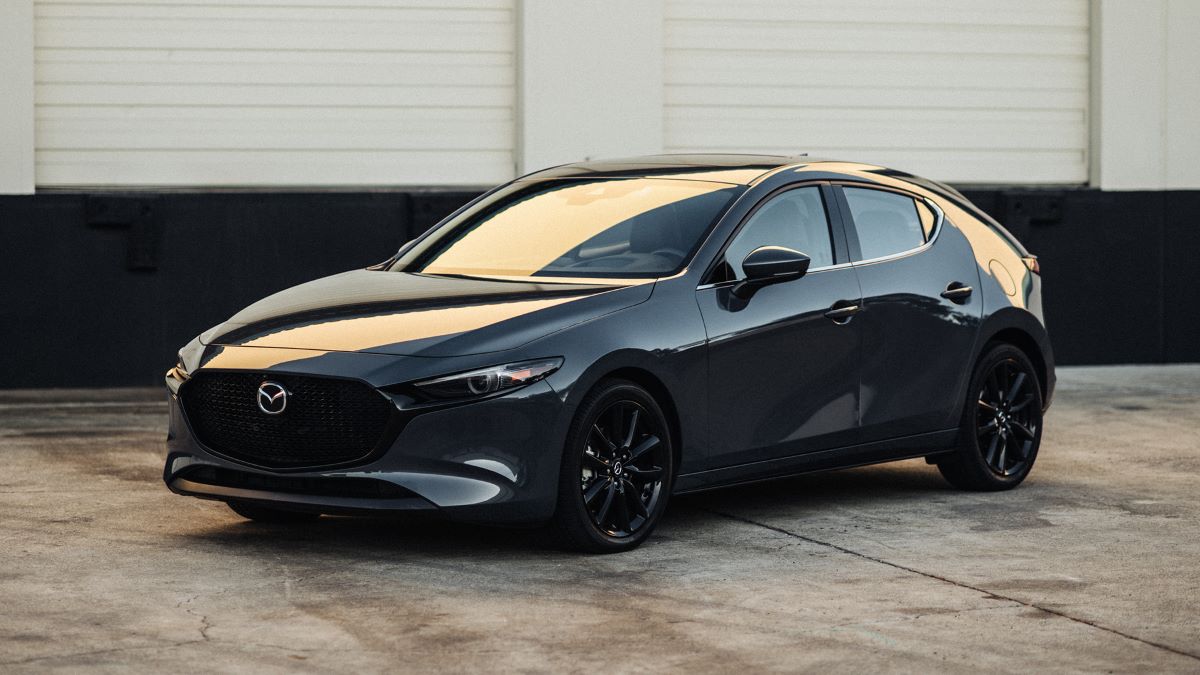
5. Mazda3 (Non-Premium Trims)
The Mazda3 has rightfully earned a reputation as one of the best-driving compact sedans on the market. Its chassis tuning, steering feel, and overall driving engagement are top-tier for the segment.
However, in its non-premium trims, the Mazda3 makes a clear trade-off: it delivers driving pleasure at the cost of sound isolation. For enthusiasts, this may feel like a worthwhile compromise, but for the average commuter, the road noise can be more of a distraction than a delight.
Mazda’s engineering approach emphasizes lightweight construction and road feedback—characteristics that inherently allow more exterior noise into the cabin.
In the lower trims, the lack of laminated glass, limited insulation in the doors and floor, and basic wheel well linings result in a cabin that picks up the nuances of every surface change. Whether it’s coarse asphalt, broken concrete, or highway expansion joints, the feedback is not just physical—it’s audible.
The naturally aspirated engine in base trims, while responsive and efficient, also contributes to the auditory overload. It tends to sound coarse at higher RPMs, especially under moderate-to-heavy throttle.
Unlike the muted tones of some turbocharged rivals, the Mazda3’s powertrain noise feels unfiltered. That, combined with a slightly more aggressive suspension setup, leads to a driving experience where performance is emphasized, but serenity is sacrificed.
In Premium trims or those with all-wheel drive, Mazda does include more insulation and improved materials that significantly dampen the noise. However, for buyers sticking to the more affordable end of the Mazda3 lineup, the lack of NVH refinement stands out.
It’s not that the car is uncomfortably loud—it’s that, in a market full of increasingly refined competitors, the base Mazda3 remains a bit too raw and connected to the road for some drivers’ taste. For those who prioritize a quiet, relaxing drive over agility and engagement, this could be a dealbreaker.
Also read: 5 Cars With Remote Kill Features and 5 That Keep Running After Theft
In the ever-expanding world of sedans, where performance metrics, infotainment interfaces, and design aesthetics often dominate the conversation, the quality of sound insulation remains a quiet but deeply influential factor.
It’s something you don’t fully appreciate until you’ve experienced both ends of the acoustic spectrum—whether it’s the plush silence of a Lexus ES or the tire roar inside a base-model Civic on the freeway. And once you’ve felt the difference, it’s hard to go back.
What separates the best-insulated sedans from the rest isn’t simply the presence of insulation material. It’s the execution—the harmony between engineering decisions and customer experience. Vehicles like the Mercedes-Benz E-Class or Audi A6 aren’t just made quieter by stuffing foam into every crevice; they’re engineered from the frame out to suppress, isolate, and eliminate intrusive sounds.
Sound-insulating glass, adaptive suspensions, noise-canceling systems, and even hydraulic motor mounts work together in symphony to cocoon passengers from road and wind disturbances. In these cars, peace isn’t a luxury; it’s a core design principle.
The Genesis G80 exemplifies this point beautifully. As a relatively new contender in the luxury space, it’s clear that Genesis wasn’t just aiming to compete on price or aesthetics—it wanted to offer an auditory experience that rivaled the Germans.
And it succeeded. When you drive a G80, the world outside seems to dim, giving you a clearer sense of control, presence, and comfort. Similarly, the Toyota Avalon may lack the prestige badge, but in terms of cabin quietness, it punches far above its class.
On the other hand, vehicles with higher cabin noise levels aren’t inherently flawed—they just prioritize different traits. The Subaru Impreza, for instance, is an excellent all-weather companion with durable build quality and strong resale value.
But its interior still lets in a fair amount of road and engine noise, which can make it feel rough around the edges during extended drives. Likewise, the Mazda3 appeals to the enthusiast crowd with its responsive handling and lively steering—but in the non-premium trims, it comes at the cost of comfort-oriented noise suppression.
The Honda Civic remains a capable commuter, and its newest iterations have improved NVH characteristics. Yet in base or mid trims, the car retains a thin barrier between the driver and the outside world. Road noise, wind rush, and tire resonance become part of the daily soundtrack—acceptable for short trips but potentially grating on long journeys.
The Kia Forte and older Nissan Sentra models fall into a similar camp: cars built to deliver value, efficiency, and practicality, with less attention paid to the subtleties of ride comfort and acoustic refinement.
So what’s the takeaway here? Understanding your own priorities. If you’re the kind of driver who values a serene, almost meditative driving experience—especially on longer commutes—then investing in a sedan with superior sound insulation is a must. It’s not just about luxury; it’s about wellness.
A quiet cabin can significantly reduce fatigue, make conversations more pleasant, and elevate your sense of calm during even the most chaotic traffic situations.
On the flip side, if you’re looking for a value-driven, reliable, and agile sedan, and don’t mind a little extra noise, some of the louder models on this list might still serve your needs well. Just go in with eyes—and ears—open. Take a test drive on the kind of roads you’ll frequent most. Listen not just to the engine or the radio, but to the silence—or the lack thereof—around you.
In the end, sound insulation is a subtle detail, but one that shapes your experience mile after mile. And in today’s saturated sedan market, where options abound, paying attention to how a car sounds (or doesn’t) might just be the wisest decision you make.

